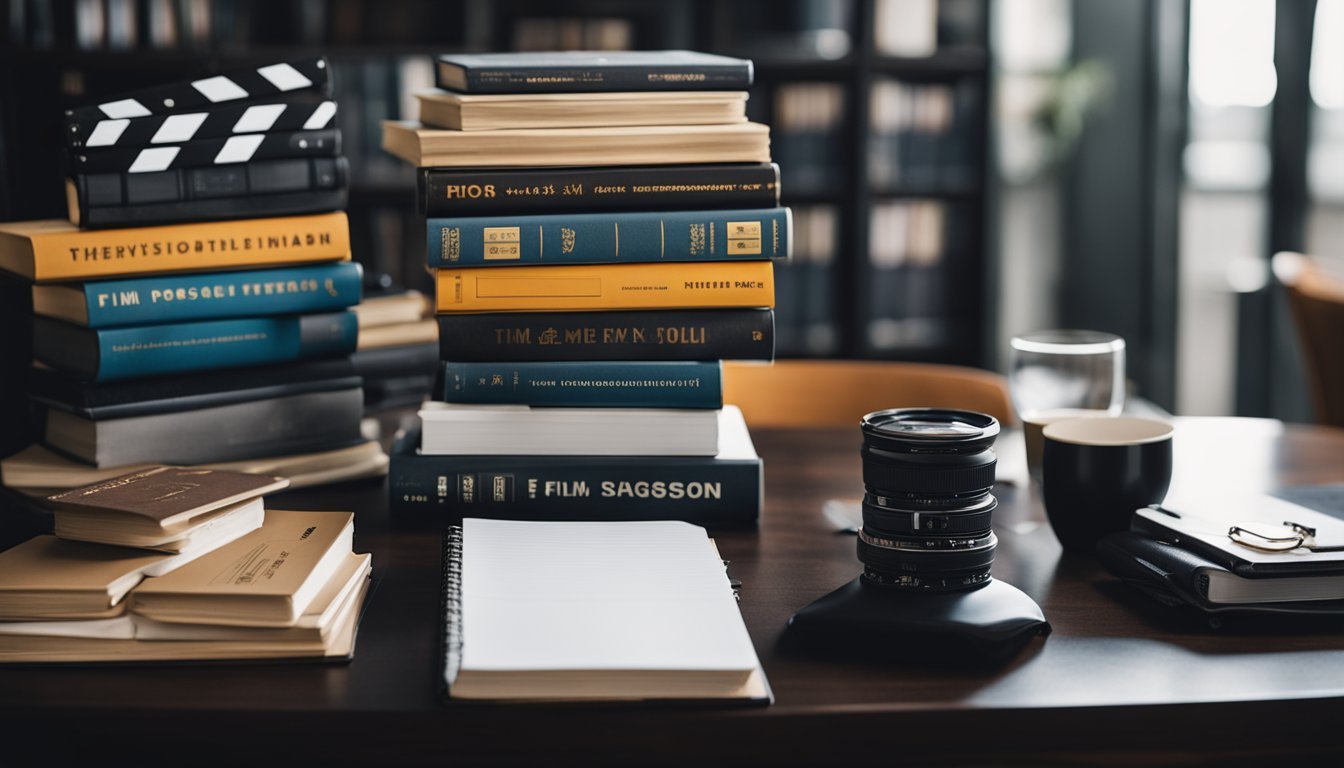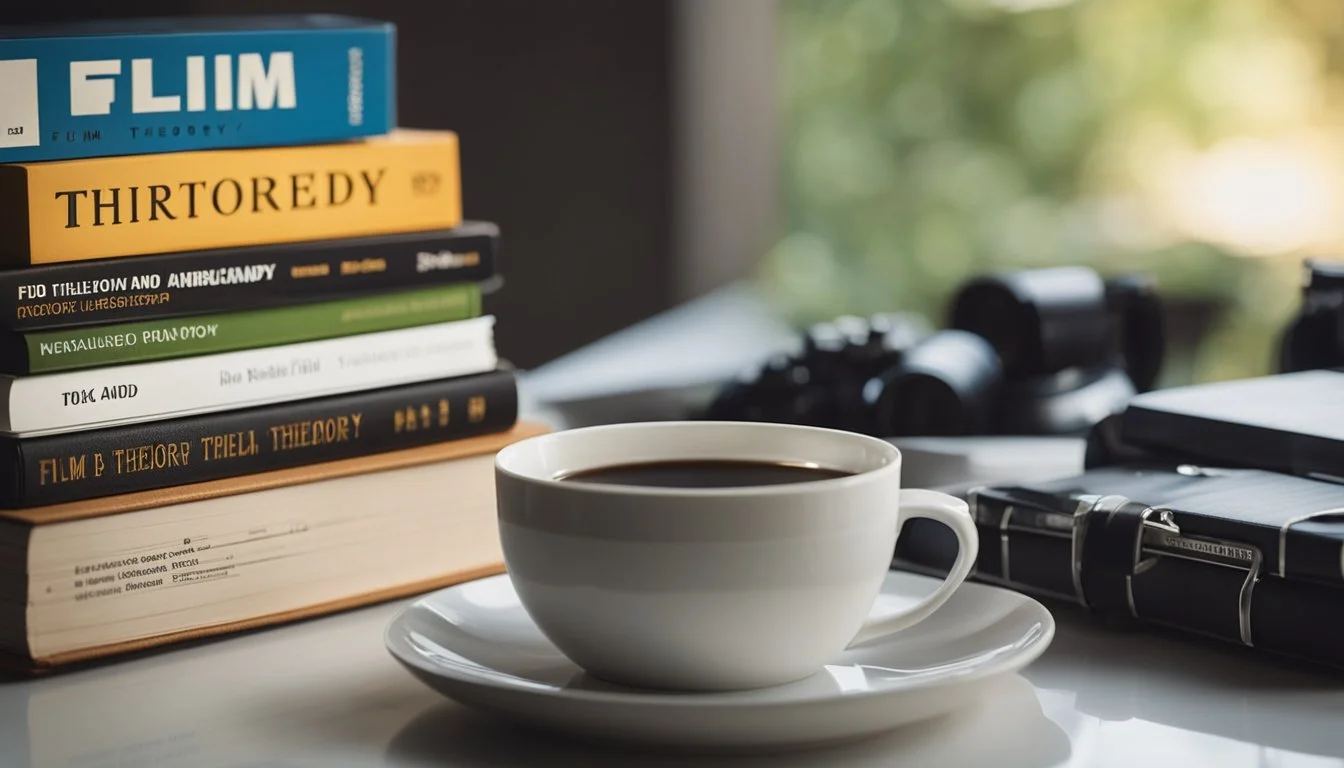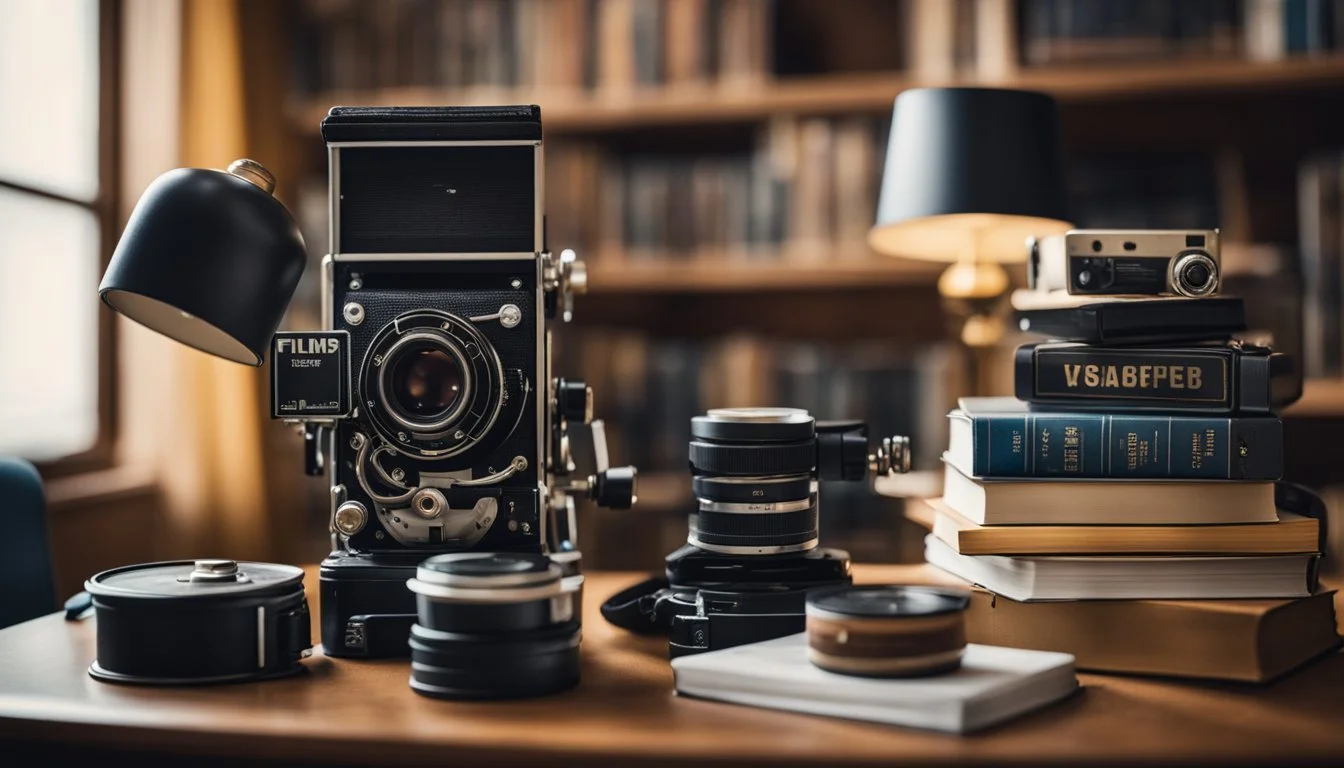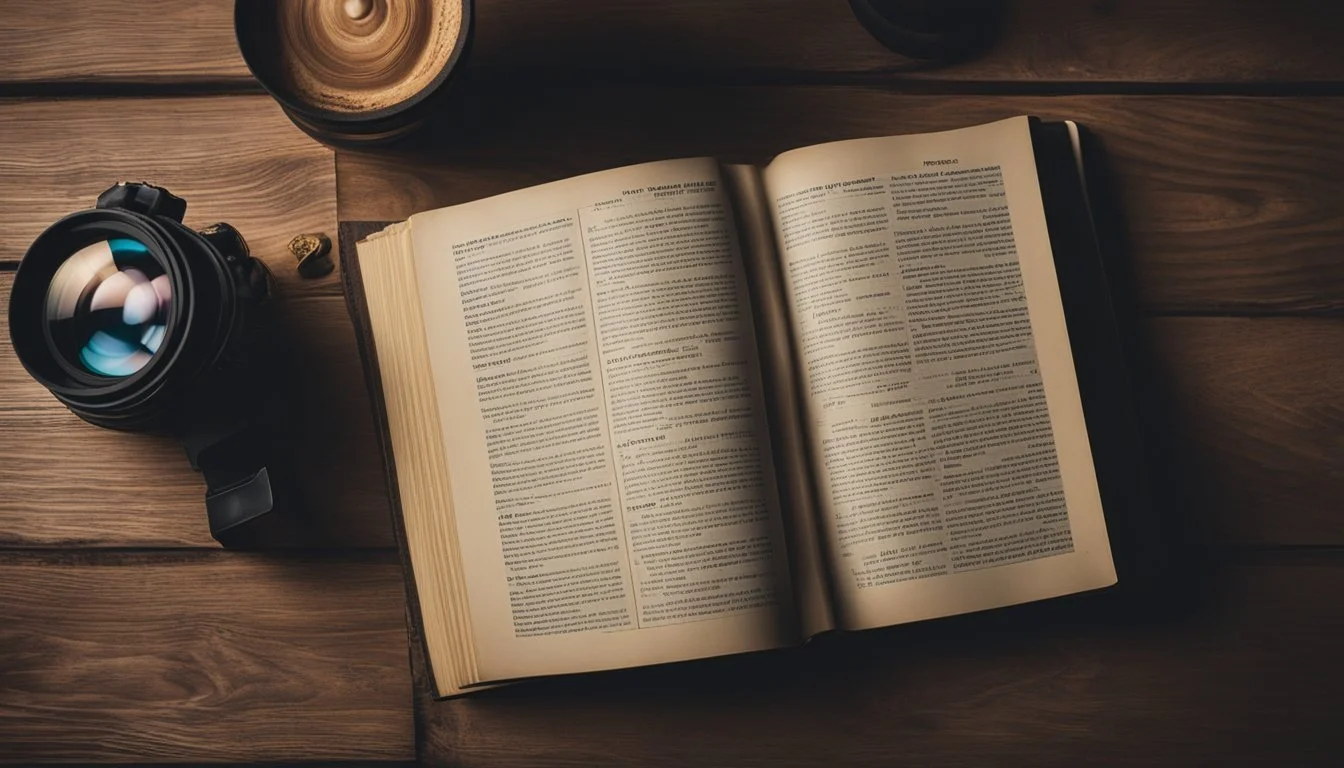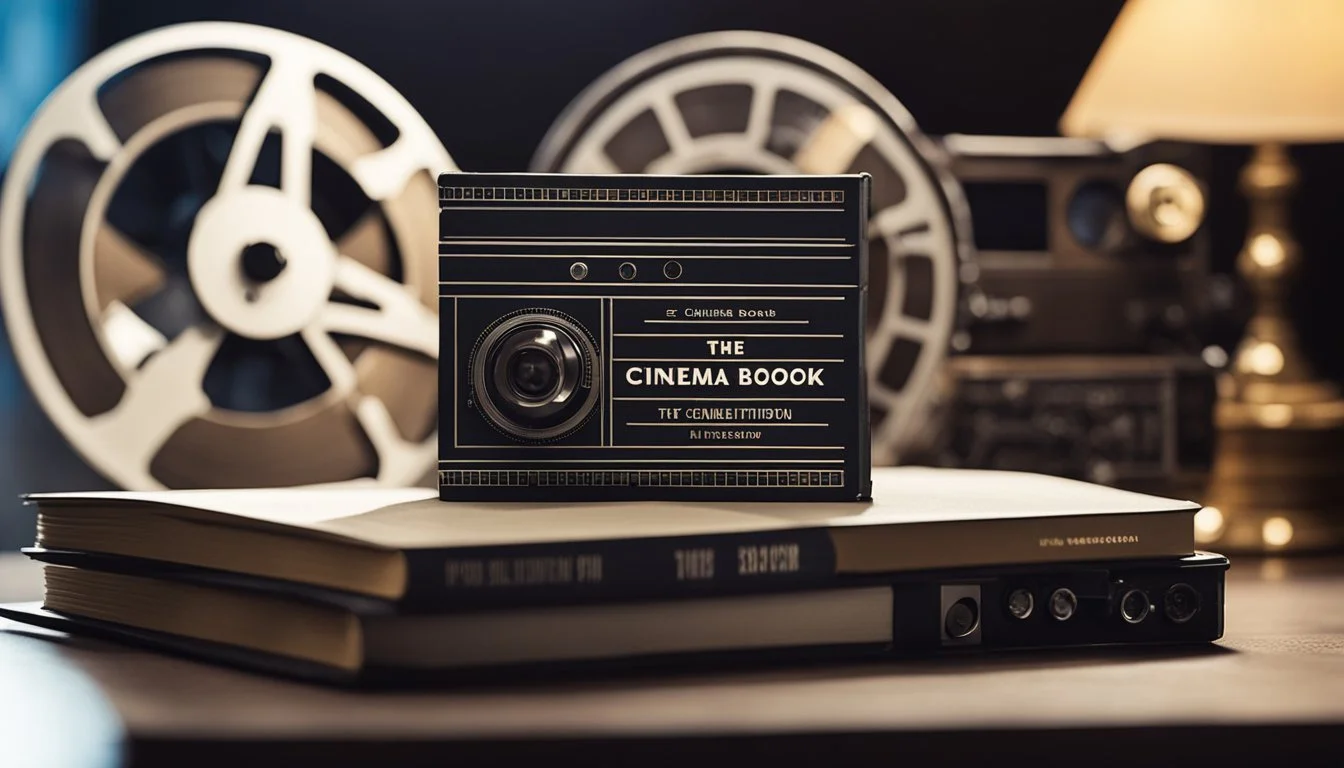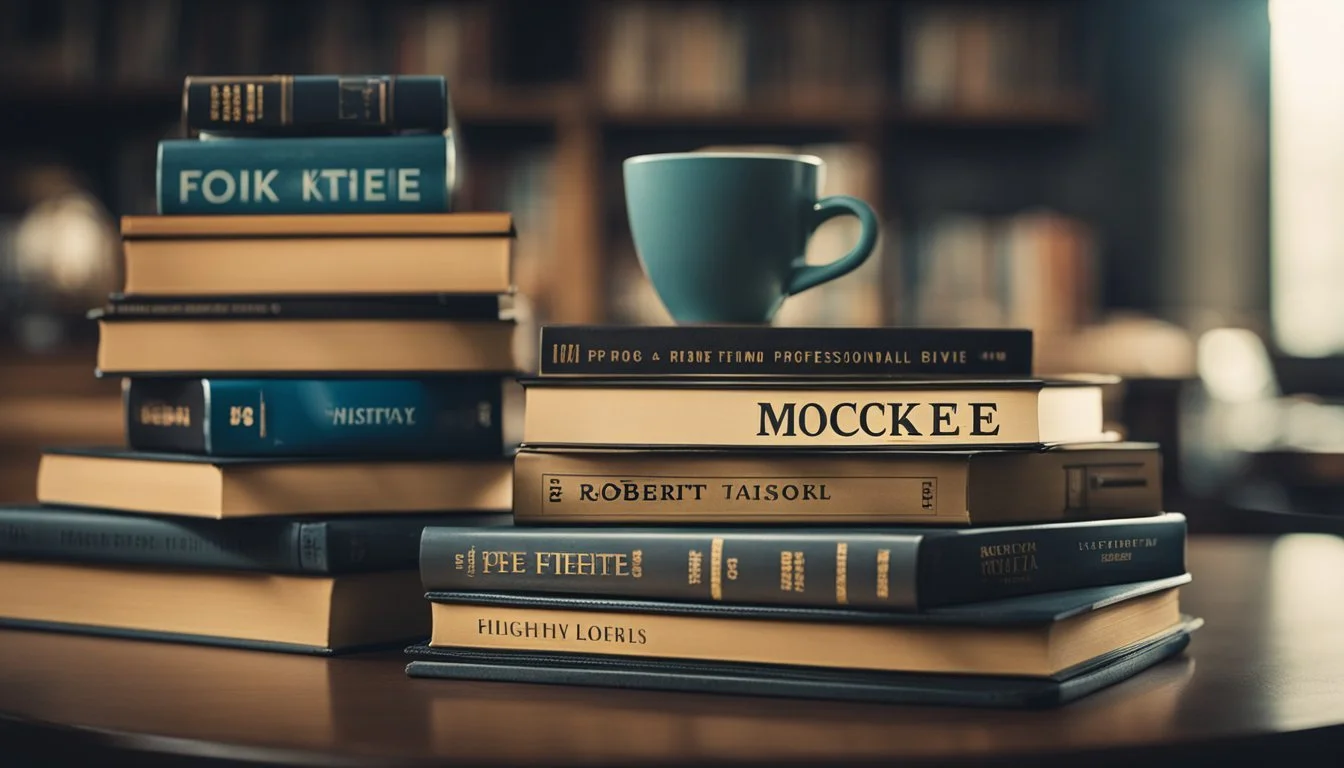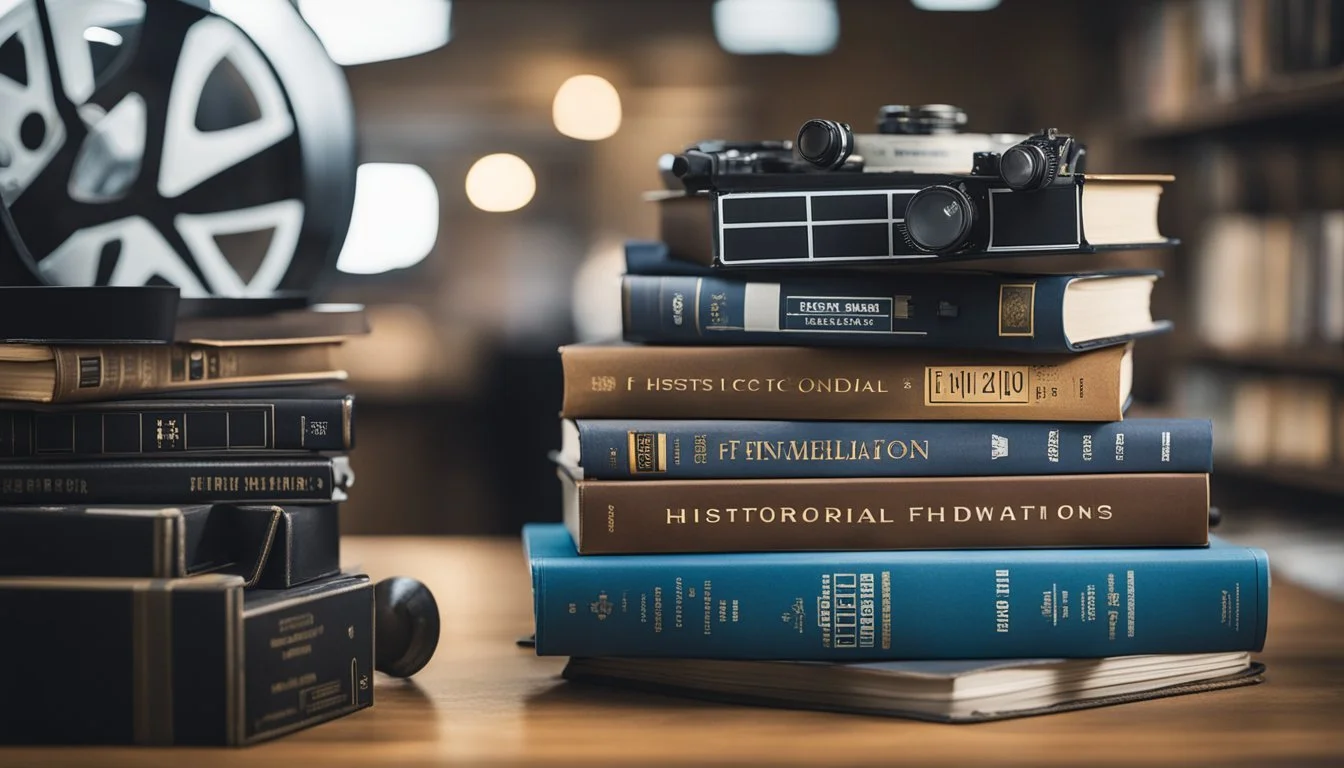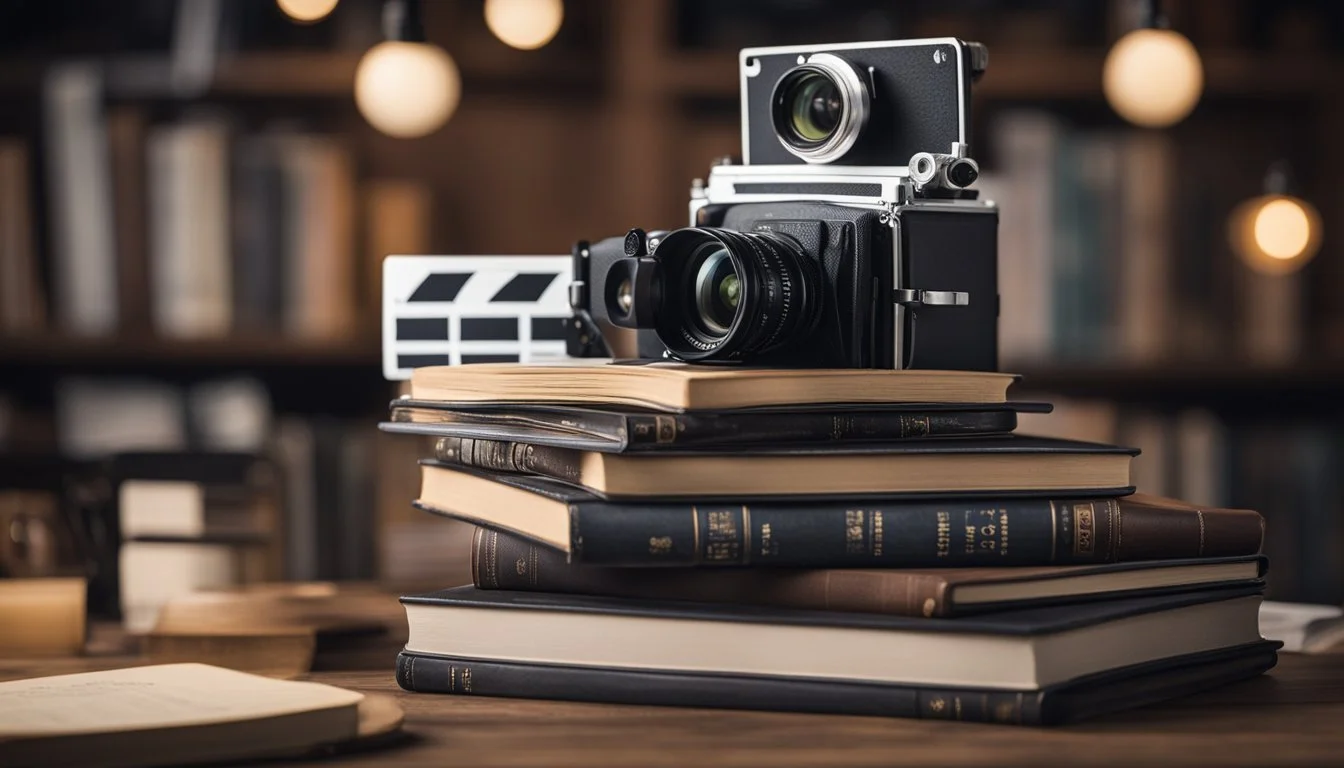14 Must-Read Film Theory Books for Aspiring Filmmakers
Essential Reading for Mastering the Craft
Understanding film theory is crucial for anyone looking to deepen their appreciation of the cinematic arts. Engaging with insightful and foundational texts can transform an aspiring filmmaker’s approach to storytelling, visual composition, and technical execution.
This article explores 14 essential film theory books that offer profound insights into the art and craft of filmmaking. Whether you're a novice filmmaker or a seasoned professional, these books provide valuable frameworks and perspectives that can sharpen your skills and enhance your creative vision.
1) 'Film Theory and Criticism' by Leo Braudy and Marshall Cohen
'Film Theory and Criticism' by Leo Braudy and Marshall Cohen stands as a seminal work in the field of film studies. First published in 1974, this anthology has become the most cited collection of critical writings about film.
The book features a comprehensive selection of essays that cover both classical texts and cutting-edge theories. It addresses a wide range of topics, from the earliest theories of cinema to contemporary discussions on digital media.
Braudy and Cohen have curated pieces that engage with different aspects of film, including semiotics, psychoanalysis, genre theory, and feminism. Their careful inclusion of diverse perspectives aids readers in understanding the multifaceted nature of film analysis.
This anthology is noted for its rigorous academic approach. The selected essays come from prominent scholars and critics, providing authoritative voices in the field. It serves as both a valuable resource for students and a reference for seasoned professionals.
With extensive revisions over several editions, the book has evolved to stay relevant with shifting trends in film theory. The editors’ commitment to updating content ensures that readers have access to the latest scholarly insights.
For anyone serious about studying film, 'Film Theory and Criticism' offers an essential foundation in both historical and contemporary thought.
2) 'The Film Experience' by Timothy Corrigan and Patricia White
'The Film Experience' by Timothy Corrigan and Patricia White is a crucial read for anyone serious about gaining a comprehensive understanding of film. This book stands out for its thorough analysis and the way it connects film techniques to broader cultural contexts.
The authors acknowledge students as movie fans and leverage this to make complex concepts accessible. They explore the formal elements of film, such as cinematography, editing, and sound, and demonstrate how these elements contribute to a film’s meaning.
The book also delves into various genres and provides historical backgrounds, enhancing the reader’s appreciation of different styles and movements. It covers avant-garde works, video art, and new media, providing a broad scope of film practices.
It’s not just about theory; practical insights are woven throughout to help readers understand how film techniques are applied in real-world scenarios. This approach makes the book both engaging and enlightening.
For aspiring filmmakers, 'The Film Experience' offers a blend of academic rigor and practical application, serving as an indispensable resource that bridges the gap between appreciation and practice in the world of cinema.
3) 'Film Art: An Introduction' by David Bordwell and Kristin Thompson
David Bordwell and Kristin Thompson's 'Film Art: An Introduction' has been a cornerstone in film studies since its first publication in 1979. The book integrates a skills-centered approach with diverse examples from various periods and countries.
The text emphasizes the art form's unique language and aesthetic. It aids students in developing analytical skills crucial for understanding cinema across all genres. The authors' clear explanations make complex concepts more accessible.
New editions of the book, now co-authored with Jeff Smith, continue to be classroom-friendly. Each revision includes updated examples and materials to reflect contemporary film studies. This ensures 'Film Art' remains relevant for new generations of filmmakers.
An invaluable resource for anyone serious about film analysis, 'Film Art' covers everything from narrative structures to visual styles. The book's detailed approach helps readers gain a deeper appreciation and understanding of the medium.
4) 'Understanding Movies' by Louis Giannetti
'Understanding Movies' by Louis Giannetti serves as an essential text for those looking to gain insight into the art of filmmaking.
The book helps readers grasp the various languages of film such as cinematography, mise en scène, movement, and editing.
Giannetti offers a detailed look into how these elements combined create meaning on screen.
One of the strengths of the book is its comprehensive coverage of fundamental filmmaking aspects.
By analyzing different techniques and systems, it makes complex concepts accessible.
A notable feature is the case study on Citizen Kane, which helps provide practical examples.
This allows readers to see theoretical concepts applied in a real film context.
'Understanding Movies' also delves into sound, acting, story, and screenwriting.
Each section is designed to enhance the reader’s understanding of how different elements contribute to the final film product.
The book is also a popular choice for introductory film courses, making it a valuable resource for students and educators alike.
Its organized structure helps readers follow along easily, making it a practical guide for anyone interested in film theory.
5) 'The Oxford History of World Cinema' edited by Geoffrey Nowell-Smith
'The Oxford History of World Cinema' offers a comprehensive look at the evolution of cinema worldwide. Edited by Geoffrey Nowell-Smith, this book is a key resource for cinephiles and film scholars.
It explores key movements, genres, and filmmakers, providing an authoritative account of cinema's development from its inception to contemporary times.
The book is beautifully illustrated with stills and posters, enhancing its appeal. It features contributions from an international team of film historians, making it a well-rounded resource.
Covering a wide range of cinematic advancements, from the silent era to digital filmmaking, it provides a deep dive into the global impact and cultural significance of cinema over the last century.
This text stands out for its engaging writing style and commitment to detail, making it accessible yet informative. 'The Oxford History of World Cinema' remains an essential addition to any aspiring filmmaker's library.
6) 'An Introduction to Film Studies' by Jill Nelmes
'An Introduction to Film Studies' by Jill Nelmes serves as an essential resource for anyone serious about understanding cinema. This comprehensive textbook has guided many film students through the complexities of film theory and practice.
The book is structured to provide a balanced overview of key concepts and issues in film studies. It delves into the historical development of film, offering insights into various national cinemas, including British, Indian, Soviet, and French.
Jill Nelmes' work is noted for its clear and accessible writing style. The text is filled with illustrations and examples that help clarify complex theories. It's particularly useful for visual learners who benefit from seeing concepts in action.
The latest edition of the book covers a broad range of film theories and theorists. It aligns contemporary insights with classical ideas, making it suitable for both beginners and more advanced students.
This edition is thoroughly revised and updated. It integrates recent developments in film studies, ensuring that readers are kept abreast of current trends and discussions in the field.
7) 'Film Theory: An Introduction' by Robert Stam
'Film Theory: An Introduction' by Robert Stam is a significant contribution to film studies literature. Published by Blackwell in 2000, Stam's work is known for its clear and accessible writing style, making complex concepts in film theory understandable.
The book explores numerous critical issues in film theory, such as realism, illusionism, narration, and point of view. It also delves into semiotics and psychoanalysis, providing a broad overview of these subjects.
Stam also examines the connections between film and literature. This book is an excellent choice for students of both disciplines, enriching their comprehension of shared theoretical principles.
In addition, Stam references prominent cinema specialists, offering readers a detailed framework that extends beyond basic concepts. This depth makes it a valuable resource for those looking to deepen their understanding of the field.
Designed primarily for students, it encourages a deeper engagement with film and literary theory. By covering a wide array of topics, it equips aspiring filmmakers with essential tools and perspectives necessary for their craft.
8) 'How to Read a Film' by James Monaco
'How to Read a Film' by James Monaco explores the multifaceted world of cinema with depth and clarity. Published in 1977, this book has become a seminal text in film studies.
Monaco examines film as both an art and a technology. He delves into the intricacies of image, sound, and the language of film. By addressing these elements, he provides readers with a comprehensive understanding of how films communicate and operate.
The book covers an extensive range of topics. These include film theory, the evolution of cinema, and the impact of digital multimedia. Monaco's work also features a select bibliography, aiding readers in further exploring film literature.
Critics have praised the book for its systematic approach. Richard Gilman described it as "the best single work of its kind," while Janet Maslin lauded its ability to simplify complex information. Such endorsements highlight its value to anyone serious about understanding film.
Whether one is interested in the historical development of film or the nuances of film technique, 'How to Read a Film' serves as a valuable resource. Aspiring filmmakers and enthusiasts alike will find Monaco's insights enlightening and informative.
9) 'The Cinema Book' by Pam Cook
'The Cinema Book,' first published in 1985 and authored by Pam Cook, has long been considered a cornerstone text in the field of film studies.
This book has undergone several revisions, significantly expanding and updating its content to reflect the ongoing developments in cinema. The second edition, released in 1999, helped solidify its esteemed reputation, and the third edition continues this tradition.
'The Cinema Book' covers a wide range of topics, from foundational concepts in film theory to intricate analyses of films and genres. It incorporates contributions from more than 60 international film scholars, offering diverse perspectives and insights.
Its accessible approach makes it suitable for both beginners and advanced students of film. The text presents complex ideas in a straightforward manner, making it a useful resource for understanding the intellectual activity within film studies over recent decades.
In summary, 'The Cinema Book' serves as a comprehensive guide, providing readers with a rich array of information and perspectives essential for anyone serious about understanding film theory and history.
10) 'Film Studies: An Introduction' by Ed Sikov
Ed Sikov's "Film Studies: An Introduction" provides a structured curriculum for understanding narrative cinema. The book details core elements of film form, making it accessible for beginners.
Sikov emphasizes active viewing by teaching techniques of film analysis. Key topics include mise-en-scène, montage, and editing. These concepts are explained with clear language and practical examples.
This text is essential for courses on film history, theory, and popular culture. Sikov's methodical approach aids readers in becoming not just passive viewers but active critics.
The book stands out for its straightforward explanations of complex concepts. It combines technical, visual, and aesthetic aspects, offering a comprehensive look into the anatomy of film.
Ideal for aspiring filmmakers and students, "Film Studies: An Introduction" is a foundational resource. It ensures a thorough grasp of film's formal language and critical analysis techniques.
11) 'The Visual Story' by Bruce Block
'The Visual Story' by Bruce Block focuses on creating the visual structure of film, TV, and digital media. It expertly blends theory and practice, providing a comprehensive guide that benefits both students and professionals in the cinematic field.
Bruce Block's work is revered for its clear explanation of visual concepts. Readers learn about composition, space, line, shape, tone, color, movement, and rhythm.
This book breaks down complex topics into understandable segments. It makes it easier for filmmakers to grasp and apply these principles.
The book is useful not just to filmmakers but also to animators, game designers, and anyone involved in visual media. Its practical approach makes it a valuable resource across various visual disciplines.
12) 'Story' by Robert McKee
'Story' by Robert McKee explores the principles of screenwriting with a detailed approach.
McKee breaks down the essential elements of storytelling, including substance, structure, and style.
The book provides insights into creating turning points that surprise and engage the audience.
McKee's discussions on duality and subtext help writers to draw out the complexities of their characters.
His methodology emphasizes the importance of storytelling as a promise to the audience.
McKee's experience as a Fulbright Scholar and his consultancy roles with major production companies lend credibility to his teachings.
For those attending his seminars, 'Story' expands on the concepts covered in his classes.
13) 'Directing: Film Techniques and Aesthetics' by Michael Rabiger
'Directing: Film Techniques and Aesthetics' by Michael Rabiger provides a comprehensive understanding of the art of directing. This book emphasizes both the technical and artistic aspects of filmmaking.
Rabiger fills the pages with practical advice and essential knowledge for every stage of production. His work covers methods, technologies, and the thought processes required for effective directing.
The book is enriched with inspiring case studies, making it a valuable resource for both novices and experienced directors. It offers a deep dive into the human, psychological, and technical knowledge necessary for the craft.
Rabiger's attention to the artistry of directing, beyond just the technical concerns, makes this book stand out. Aspiring filmmakers will find this manual particularly useful as it combines theory with actionable insights.
Designed to guide readers through the intricacies of filmmaking, it delivers enduring elements that are vital for any director. From idea development through to the final cut, this book covers all aspects of directing.
Michael Rabiger's clear and insightful writing ensures that "Directing: Film Techniques and Aesthetics" remains an essential read for anyone looking to pursue a career in directing.
14) 'Making Movies' by Sidney Lumet
"Making Movies" by Sidney Lumet is an essential read for anyone interested in the art of filmmaking. Lumet, an Academy Award-winning director, uses his extensive career to offer valuable insights into the craft.
In this book, Lumet breaks down the filmmaking process from the first rehearsal to the final screening. He discusses key aspects such as directing actors, setting up shots, and navigating the business side of cinema.
Lumet also shares personal anecdotes from his experiences directing classics like "12 Angry Men" and "Network." These stories provide a behind-the-scenes look at Hollywood and the challenges faced by filmmakers.
The book is known for its clear and candid style, making complex concepts accessible to readers. His descriptions of the psychology behind filmmaking and production decisions are particularly insightful.
With over 50 films to his name, Lumet's comprehensive knowledge and practical advice make "Making Movies" a must-read for aspiring filmmakers looking to broaden their understanding of the industry.
Historical Foundations of Film Theory
The historical foundations of film theory offer invaluable insights into the evolution of filmmaking. Understanding these roots is essential for any aspiring filmmaker.
Early Cinema and Its Impact
The origins of film theory can be traced back to the late 19th and early 20th centuries. During this period, pioneers like Georges Méliès and the Lumière brothers explored the potential of moving images.
Early films were often short and experimental. Méliès's use of special effects in A Trip to the Moon demonstrated cinema's ability to create fantastical worlds. Meanwhile, the Lumière brothers focused on capturing real-life events, essentially inventing documentary filmmaking.
This era laid the groundwork for fundamental cinematic concepts. The Kuleshov Effect, developed by Lev Kuleshov, examined how editing impacts viewers' perception. This concept continues to influence modern editing techniques and understanding of film grammar.
Classical Hollywood and Narrative Theory
Moving into the 1920s and 1930s, Classical Hollywood became the dominant force in global cinema. This period emphasized strong storytelling, continuity editing, and character-driven narratives.
Directors like D.W. Griffith and filmmakers at major studios refined techniques that would define Classical Hollywood Cinema. Griffith's The Birth of a Nation showcased the power of narrative cinema, utilizing advanced editing and cross-cutting techniques to build emotional engagement.
The concept of the "invisible style" emerged, emphasizing seamless storytelling where the mechanics of film production remain hidden from the audience. This approach aimed to enhance immersion and has been a foundational principle in filmmaking.
Classical Hollywood also popularized genres such as film noir, musicals, and Westerns, each contributing unique narrative and stylistic conventions that remain influential. The narrative structures and techniques developed during this time continue to be taught in film schools around the world.
Modern Approaches to Film Analysis
Modern film analysis incorporates diverse frameworks that provide depth and insight into the filmmaking process. This section discusses key approaches, specifically Auteur Theory and Genre Studies, which are crucial for understanding contemporary cinema.
Auteur Theory
Auteur Theory centers on the concept of the director as the principal creative force behind a film. Originating in the 1950s from French critics like François Truffaut, it emphasizes the director's personal influence on the film’s style, theme, and narrative structure.
Key directors often cited include Alfred Hitchcock, whose suspenseful style and thematic consistency mark his films with a distinct identity. Martin Scorsese also exemplifies this theory; his work often explores complex characters and urban settings, showcasing his unique vision.
Despite criticisms that it downplays the collaborative nature of filmmaking, Auteur Theory remains pivotal for analyzing the director's role in shaping a film's artistic direction.
Genre Studies
Genre Studies examines films based on their classification into specific genres such as horror, comedy, or science fiction. This method helps in understanding the conventions, narrative structures, and audience expectations tied to each genre.
Film scholars use Genre Studies to analyze how films adhere to or subvert genre conventions. For example, Stanley Kubrick’s "The Shining" both employs and challenges conventional horror tropes, creating a unique cinematic experience.
This approach is vital for understanding how films communicate with audiences through familiar patterns while also allowing for innovation within established frameworks. It highlights the interaction between industry standards and creative expression.
Practical Applications of Film Theory
Film theory provides essential insights that can significantly enhance directorial techniques and cinematographic choices, allowing filmmakers to effectively communicate their vision and evoke desired emotions.
Directorial Techniques
Directors use film theory to inform their creative decisions and storytelling approaches. Understanding concepts like narrative structure and character development helps in crafting compelling stories. Techniques such as the "montage theory" influence how directors edit films to pace the story and build tension. Additionally, examining auteur theory can inspire directors to develop a distinctive style that sets their work apart. Directors often utilize intertextuality, drawing from existing films and media to deepen the audience's connection with the new content.
Cinematography and Visual Storytelling
Cinematographers rely heavily on film theory to enhance the visual impact of their work. Mise-en-scène principles guide the arrangement of everything within the frame, from set design to lighting and actor placement, to convey specific moods and themes. Theories around camera movement and shot composition (like the Rule of Thirds) shape how stories are visually told, influencing audience perception. The utilization of color theory helps evoke emotions and symbolize ideas, while depth of field manipulates focus to guide the viewer's attention.

